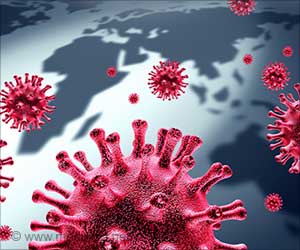Researchers unravel two important mysteries related to COVID-19. They found six biomarkers that are responsible for severe COVID-19 and also discovered the mechanism of blood clotting in COVID-19.

‘Six biomarkers that are responsible for severe COVID-19 infection have been discovered. The mechanism by which the blood forms clots in COVID-19 have also been discovered. These two discoveries open possibilities of better COVID-19 diagnosis and treatment.’
Read More..




The studies were conducted by analyzing blood samples from critically ill patients at London Health Sciences Centre (LHSC). They build on a growing body of work from the team who were first in the world to profile the body's immune response to the virus by revealing a separate six molecules that could act as potential targets to treat hyperinflammation in critically ill patients.Read More..
"We've begun answering some of the biggest COVID-19 questions asked by clinicians and health researchers," says Dr. Douglas Fraser, lead researcher from Lawson and Western's Schulich School of Medicine & Dentistry, and Critical Care Physician at LHSC.
"While the findings need to be validated with larger groups of patients, they could have important implications for treating and studying this disease."
Predicting which COVID-19 patients will get worse
With no proven therapies, many COVID-19 patients admitted to intensive care units (ICUs) do not survive.
Advertisement
The researchers identified six molecules of importance (CLM-1, IL12RB1, CD83, FAM3B, IGFR1R and OPTC).
Advertisement
"While further research is needed, we're confident in these biomarkers and suspect these patterns may be present even before ICU admission, such as when a patient first presents to the emergency department," notes Dr. Fraser.
"These findings could be incredibly important in determining how severely ill a patient will become."
The team measured 1,161 plasma proteins from the blood of 30 participants: 10 COVID-19 patients and 10 patients with other infections admitted to LHSC's ICU, as well as 10 healthy control participants. Blood was drawn on set days of ICU admission, processed in a lab and then analyzed using statistical methods and artificial intelligence.
The team notes that predicting a patient's disease severity can help in a number of ways.
It could allow for medical teams to have important conversations with family members, setting goals of care based on the patient's health and personal wishes.
Medical teams could use the knowledge to mobilize resources more quickly. If they know a patient is at higher risk of death, they may consider intervening sooner despite associated risks.
The team also hopes the findings can be used to better design COVID-19 clinical trials by grouping patients based on their risk. This could allow for stronger results when examining potential treatments for the disease.
Understanding why blood clots occur and how to treat them
A major complication occurring in most critically ill COVID-19 patients is clotting in the lung's small blood vessels which leads to low oxygen levels in the body.
"The reason for this clotting has been unclear. Most suspect the clotting mechanisms in our blood are put into overdrive and so many clinicians have been treating with anticoagulant therapies like the drug heparin," says Dr. Fraser. "But we've uncovered an entirely different mechanism."
The team further analyzed the blood samples from their 30 participants, and found evidence to suggest that the inner linings of small blood vessels are becoming damaged and inflamed, making them a welcoming environment for platelets (small blood cells) to stick.
They discovered that COVID-19 patients had elevated levels of three molecules (hyaluronic acid, syndecan-1 and P-selectin.)
The first two molecules are products broken down from small hair-like structures (the glycocalyx) which line the inside of the blood vessels. Their presence suggests the glycocalyx is being damaged with its breakdown products sent into the bloodstream.
The presence of P-selectin is also significant as this molecule helps to make both platelets and the inner lining of blood vessels adhere to one another.
"The glycocalyx keeps platelets from touching the inside wall of the blood vessel and helps facilitate the production of nitric oxide, which has an important role in preventing platelets from sticking," explains Dr. Fraser.
"We suspect the body's immune response is producing enzymes that shear off these little hair-like structures, inflaming blood vessels and making them a welcoming environment for platelets to form clots."
The team suggests that two therapies may hold promise for treating blood clots in COVID-19 patients: platelet inhibitors to stop platelets from sticking and molecules to protect and restore the inner lining of blood vessels.
"By exploring these therapies as potential alternatives to anticoagulant therapies, we may be able to improve patient outcomes," says Dr. Fraser.
"Through our combined findings, we hope to provide tools to predict which patients will become the most severely ill and treatments for both hyperinflammation and blood clots."
Source-Eurekalert















